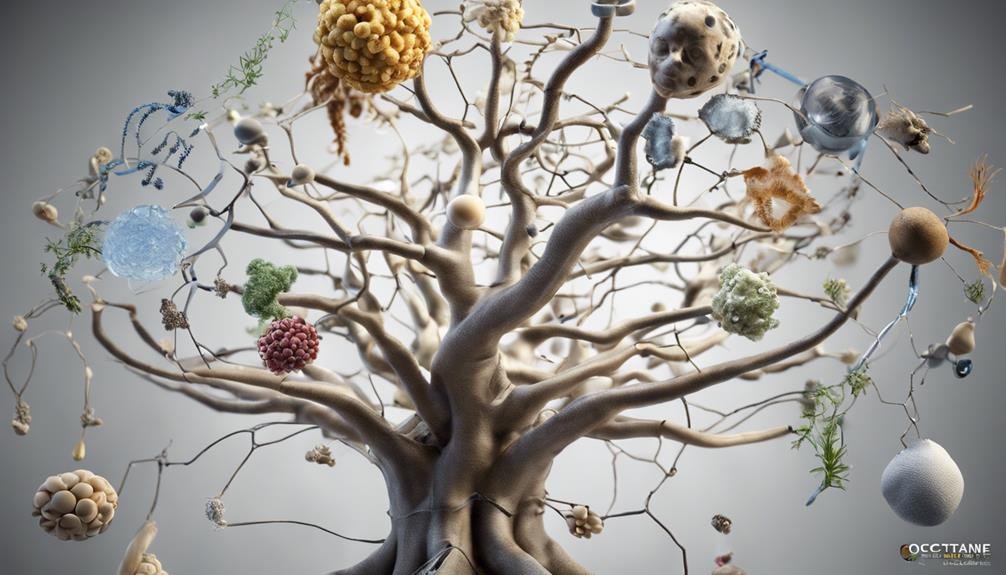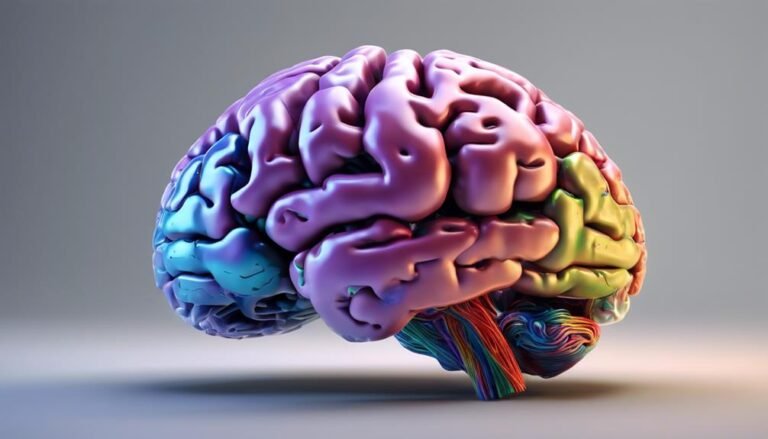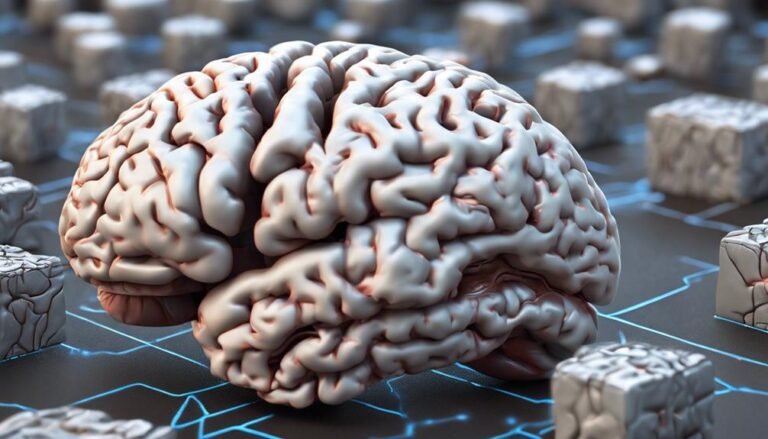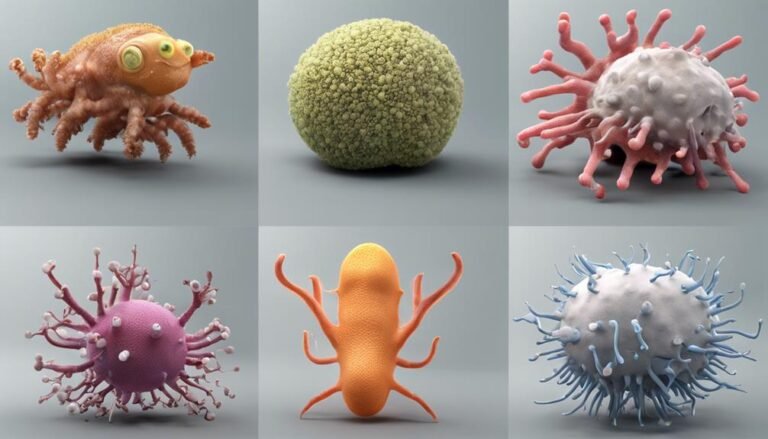Introduction to Biological Theories
As you begin exploring biological theories, you'll uncover a world where the intricate dance of life unfolds through cellular mechanisms, genetic coding, and evolutionary adaptations. These foundational concepts pave the way for understanding how organisms interact with their surroundings and evolve over time. By peering into the depths of biological theories, you'll gain a newfound appreciation for the complexities that drive the living world, sparking curiosity about the mysteries waiting to be unraveled.
Key Takeaways
- Biological theories encompass cell division, genetics, evolution, and ecological systems.
- DNA replication and mutations impact genetic inheritance and phenotype expression.
- Natural selection drives evolutionary adaptations for survival and reproduction.
- Ecosystem dynamics rely on species interactions and energy flow for stability.
- Biological principles are applied in genetics, ecology, biotechnology, and drug development.
The Basics of Biological Theories
To understand the basics of biological theories, one must grasp the fundamental principles that govern the study of living organisms and their interactions.
Two essential processes in biology are cell division and DNA replication. Cell division is the mechanism by which cells multiply and is essential for growth, repair, and development. The cell cycle, comprising interphase, mitosis, and cytokinesis, orchestrates this intricate process.
During interphase, the cell prepares for division by replicating its DNA, ensuring that each daughter cell receives a complete set of genetic information.
DNA replication is a highly regulated process that occurs before cell division. It involves unwinding the double helix structure of DNA, synthesizing new complementary strands, and proofreading for accuracy. Enzymes such as DNA polymerase are pivotal in ensuring fidelity during replication. Mistakes in DNA replication can lead to mutations, potentially causing genetic disorders or cancer.
Understanding these fundamental processes provides insights into how living organisms grow, develop, and maintain genetic stability.
Understanding Cells and Genetics
You understand the intricate structures that make up cells, including the organelles responsible for various functions, such as energy production and protein synthesis.
In genetics, you grasp the fundamental principles of inheritance, including the transmission of genetic information from parents to offspring, and the role of DNA in determining traits.
Through exploring cell biology and genetics, you gain insight into the foundational components of life and the mechanisms that drive biological processes.
Cell Structure Basics
Understanding the fundamental principles of cell structure is essential in unraveling the complexities of genetics and biological processes. Cells are the basic units of life, each performing specific functions important for the overall functioning of an organism.
Within a cell, organelles play specialized roles in maintaining cellular activities. For instance, the nucleus is the control center of a cell, housing genetic material and orchestrating cell functions such as growth and reproduction.
Mitochondria are responsible for producing energy through cellular respiration, essential for powering various cell activities. The endoplasmic reticulum aids in protein synthesis and transport, while the Golgi apparatus modifies, sorts, and packages proteins for secretion.
Understanding the functions of these organelles provides insights into how cells operate and communicate with each other, which in turn influences genetic processes. By delving into the intricacies of cell structure basics, a deeper comprehension of genetics and biological phenomena can be achieved.
Genetic Inheritance Overview
How does genetic inheritance shape the characteristics of living organisms at a cellular level?
Genetic inheritance, governed by Mendelian genetics, determines the transmission of hereditary traits from parents to offspring. Within cells, DNA sequencing plays an essential role in this process. DNA, the genetic blueprint of an organism, contains the instructions for protein synthesis and cell function. During reproduction, genetic material is passed on, leading to the expression of specific traits in the offspring.
Furthermore, genetic mutations can alter the information encoded in DNA, potentially affecting the phenotype of an organism. Mutations can be spontaneous or induced by external factors like radiation or chemicals. These changes in the genetic code can result in variations in traits within a population.
Understanding genetic inheritance at the cellular level is essential for comprehending the mechanisms behind the diversity of life forms.
Through the study of Mendelian genetics, DNA sequencing, and genetic mutations, scientists can unravel the complexities of heredity and the transmission of traits across generations.
Evolution and Natural Selection
Evolutionary theory, a foundational concept in biology, explains the process by which species change over time through natural selection. Adaptation mechanisms play an essential role in this process, allowing organisms to develop survival strategies that increase their chances of reproducing and passing on advantageous traits to future generations.
Natural selection acts as the driving force behind evolution, favoring traits that enhance an organism's ability to survive and reproduce in a given environment while weeding out less favorable characteristics.
Organisms that possess traits better suited to their environment are more likely to thrive and pass on these traits to their offspring. Over time, this leads to the gradual accumulation of beneficial adaptations within a population, ultimately resulting in the formation of new species.
Evolution through natural selection is a dynamic and ongoing process, constantly shaping the diversity of life on Earth based on the interplay between organisms and their environments.
Ecological Systems and Interactions
You'll explore the intricate dynamics of ecosystems, where interconnected relationships between living organisms and their environment shape the balance of life's existence.
Species interactions within these systems, be it competition, predation, or mutualism, play an essential role in driving the diversity and stability of ecosystems.
Understanding the complexities of ecological systems and interactions is fundamental to unraveling the intricate web of life on Earth.
Ecosystem Dynamics
Within ecological systems, the interactions between living organisms and their physical environment drive the dynamic processes of ecosystem dynamics. Food chain dynamics and energy flow are fundamental components shaping the stability and functioning of ecosystems.
Energy flows through ecosystems in a unidirectional manner, with primary producers converting sunlight into energy that's then transferred through the food chain to consumers and decomposers. Population fluctuations play an important role in ecosystem dynamics, influencing community stability and resilience.
Fluctuations in population sizes can lead to cascading effects throughout the ecosystem, impacting species interactions and resource availability. Understanding the intricate balance between population dynamics and community stability is essential for predicting how ecosystems will respond to environmental changes and disturbances.
Species Interactions
In ecological systems, species interactions play an important role in shaping the dynamics and structure of ecosystems. Competition dynamics drive species to compete for limited resources, leading to adaptations and niche specialization.
Predator-prey relationships are fundamental in regulating population sizes, influencing both predator and prey evolution.
Symbiotic partnerships are intricate interactions where different species rely on each other for survival or mutual benefit. Examples include mutualism, where both species benefit, and commensalism, where one benefits without affecting the other greatly. Parasitism, another form of symbiosis, involves one species benefiting at the expense of the other.
Understanding species interactions is essential for comprehending community dynamics, as these interactions create a web of relationships that define the stability and resilience of ecosystems.
Changes in species interactions can have cascading effects throughout the ecosystem, impacting biodiversity and overall ecosystem health. By studying the intricate relationships between species, scientists can gain insights into the complex mechanisms that drive ecological systems.
Applications in Life Sciences
Applications of biological theories in the field of life sciences encompass a wide range of research areas, from genetics to ecology. Biotechnology advancements have revolutionized the way we approach medical breakthroughs.
In genetics, the application of biological theories has led to the development of gene editing tools like CRISPR-Cas9, allowing for precise modifications in DNA sequences. These advancements have opened up new possibilities for treating genetic disorders and diseases.
In ecology, biological theories are applied to study ecosystem dynamics and biodiversity conservation. Understanding the principles of species interactions helps in predicting the effects of environmental changes and implementing effective conservation strategies. Biologists use mathematical models based on biological theories to simulate population dynamics and predict the impacts of human activities on ecosystems.
Moreover, in the field of biotechnology, biological theories are essential for developing new drugs, improving agricultural practices, and creating biofuels. By applying biological principles, scientists can engineer microorganisms for various purposes, such as producing insulin or breaking down pollutants.
Delving Deeper Into Biological Concepts
Biological concepts serve as the foundation for understanding the intricate mechanisms governing life at various levels of organization.
When delving deeper into biological concepts, two fundamental processes stand out: DNA replication and cellular respiration.
DNA replication, an essential event in cell division, guarantees the faithful transfer of genetic information from one generation to the next. It involves the unwinding of the double helix, the synthesis of new complementary strands, and the proofreading mechanisms that maintain the integrity of the genetic code. Errors in DNA replication can lead to mutations, potentially impacting an organism's phenotype and fitness.
Cellular respiration, on the other hand, is the process by which cells extract energy from nutrients to fuel various cellular activities. Through a series of metabolic pathways, such as glycolysis, the citric acid cycle, and oxidative phosphorylation, cells convert glucose into ATP, the energy currency of the cell.
Understanding the intricacies of cellular respiration is essential for comprehending how organisms generate energy to carry out essential biological functions.
Conclusion
As you navigate the intricate web of biological theories, remember that like a cell dividing and evolving, you too are constantly adapting and growing.
Just as natural selection shapes species, your choices and actions shape your own path.
Embrace the interconnectedness of life and the environment, for in understanding these principles, you hold the key to revealing the mysteries of existence.
Keep exploring, keep learning, and let the wonders of biology guide you on your journey.







